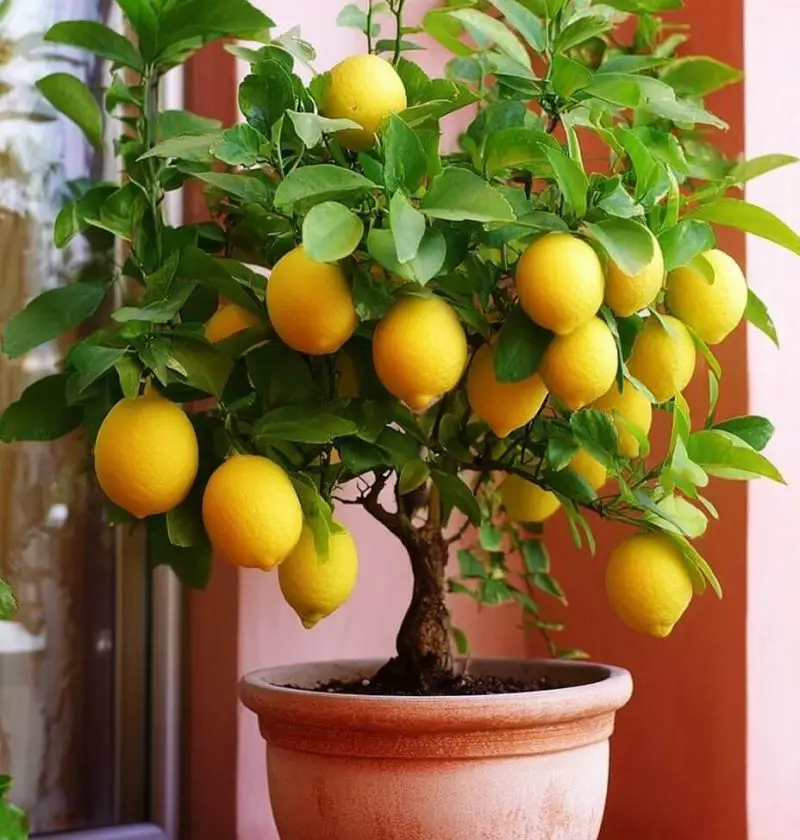I still remember the first time I saw a lemon tree in someone’s kitchen. It wasn’t some fancy greenhouse setup—just a sunny windowsill, a simple terra cotta pot, and this cheery little tree with glossy green leaves. And there it was, right in the middle of winter—a single lemon, hanging like sunshine. I was hooked.
Now, a few years and a couple of trials later, I’ve got a pot by my patio that gifts me fragrant blooms in spring and plump little lemons by late summer. It’s not magic—it’s actually very doable. So if you’ve ever thought, “Could I really grow lemons at home?” the answer is: oh honey, yes you can.
Why Grow Your Own Lemon Tree?
Let’s start with the obvious.
-
Because grocery lemons just don’t hit the same. Homegrown ones are juicier, more fragrant, and somehow a little sassier.
-
Because lemon trees are pretty. Seriously, those shiny green leaves and delicate white blooms? Instant mood booster.
-
Because it feels good. Watching something grow from seed to fruit? That’s a whole vibe.
-
Because you’ll always have a lemon when you need one. No more sad, wrinkly ones in the back of your fridge.
What You’ll Need (And What You Don’t)
No need to overthink this or load up on fancy gear. Here’s your starter list:
-
One organic lemon (non-organic seeds often don’t sprout)
-
A small pot to start and a slightly larger one for later
-
Potting soil that drains well (look for something labeled “citrus” or “light and airy”)
-
A sunny spot—think 8 hours of light a day
-
A bit of plastic wrap or a clear sandwich bag (more on that in a sec)
That’s it. Really.
Let’s Plant: From Lemon Seed to Tiny Tree
Step 1: Wet That Dirt (But Don’t Soak It)
Moisture is key. You want your soil damp like a wrung-out washcloth—no puddles, no mud pies.
Step 2: Fill Your Pot
Spoon in the soil, leaving about an inch at the top. Think of it like making room for frosting on a cupcake—don’t overfill.
Step 3: Grab Your Seed
Pluck a plump one straight from your lemon. No drying out! Honestly, I just pop it in my mouth while I prep—yes, really. It keeps it moist and makes you feel like a backyard scientist.
Save This Recipe
Step 4: Plant That Baby
Plant the seed about a half-inch deep, cover it lightly, and give it a good watering. Think “gentle rain,” not “tsunami.”
Step 5: Cover with Plastic (Maybe)
This part’s a balancing act. A bit of breathable plastic helps trap warmth and humidity, kind of like a mini greenhouse. But if your place already stays warm and sunny, skip it. Too much moisture can lead to root rot, and trust me, that’s not a party you want to host.
Step 6: Wait… and Then Boom—Sprouts!
In two weeks or so, you’ll start to see tiny green shoots. It’s like magic. Once they’re up, ditch the plastic, let them breathe, and keep that soil moist (but not soggy).
A Few Tips from Someone Who Learned the Hard Way
Let It Soak Up Some Outside Time
Even if it’s an indoor plant, your lemon tree needs fresh air and bees if you ever want fruit. Give it some porch time during the day.
Shade Isn’t the Enemy
Hot states—looking at you, Arizona and Southern Cali—can scorch young lemon trees. A little morning sun and afternoon shade works better than full blast all day.
Keep It Cozy
Ideal temps? Around 70°F during the day, no lower than 55°F at night. Below 54°F, your tree might nap and stop producing. (And who can blame it?)
Want to Switch It Up?
-
Try Meyer lemons—they’re sweeter and grow beautifully in containers.
-
Not a fan of waiting? Buy a baby tree at your local nursery and skip the seed stage.
-
Upgrade to a self-watering pot—perfect for forgetful folks (me, it’s me).
Long-Term Love: Keeping Your Lemon Tree Happy
Once it’s about 6 inches tall:
-
Repot it into a larger container when it starts to look root-bound.
-
Give it a little citrus-specific fertilizer every month or two during the growing season.
-
Check for bugs under the leaves—spider mites and aphids are sneaky.
And if it looks sad? Don’t panic. Sometimes they pout. Adjust water or sunlight and give it a few days.
One Last Thing Before You Go…
Listen, growing a lemon tree isn’t going to change your whole life. But you know what? It might make your kitchen a little brighter. Your tea a little fresher. Your mornings a bit more satisfying. And when you finally pluck that first lemon and squeeze it into a cold drink on a hot day—well, you’ll see exactly why I keep going back for more.
So what do you think—ready to grow one? If you give it a go, let me know how it’s going. I’ll be cheering for you from my porch, lemonade in hand.

